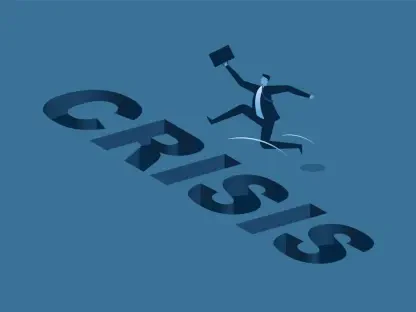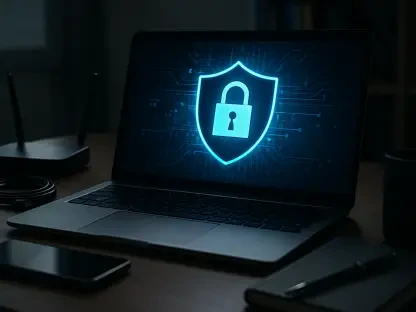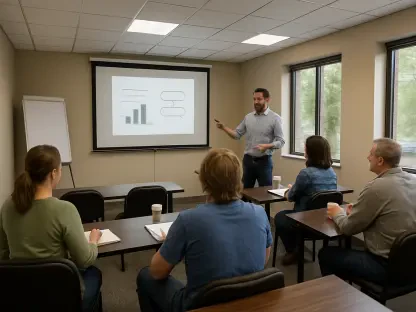Illinois is grappling with significant budgetary pressures that threaten the future of K-12 public school funding. Despite recent increases in state funding, driven by consistent revenue growth and the implementation of the Evidence-Based Funding (EBF) model, the state now faces flat revenue growth and rising financial obligations in other areas. This article delves into the potential impacts of these pressures on public education funding, drawing insights from state officials, budget analysts, and education advocates.
Current State of K-12 Funding in Illinois
Recent Increases in State Funding
Over the past few years, Illinois public schools have seen substantial increases in state funding. This growth is largely attributed to the consistent rise in state revenues and the introduction of the EBF model in 2018. The EBF model aims to ensure a more equitable distribution of funds, addressing disparities among districts based on factors such as student enrollment, poverty rates, and the number of English Language Learners (ELLs). By doing so, it attempts to level the educational playing field across the state, providing necessary resources to often-underserved and disadvantaged areas.
The state’s commitment to bolstering public education funding has yielded notable progress in addressing historical inequities. However, the sustainability of this financial support is being challenged by new fiscal realities. As financial experts forecast a period of flat revenue growth, the increased financial obligations in other areas of the state budget are raising concerns about Illinois’s ability to maintain or further enhance its investment in K-12 education without making significant trade-offs elsewhere.
The Evidence-Based Funding Model
The EBF model has been instrumental in driving funding increases, with a statutory commitment to annual funding boosts of at least $350 million. This model is designed to move all districts closer to their respective adequacy targets, ensuring that resources are allocated based on specific needs and challenges faced by each district. The model takes into account a variety of factors, including class sizes, special education needs, and support services, to ascertain each district’s unique financial requirements.
This targeted approach has been praised for its fairness and effectiveness in directing funds to the areas that need them the most. However, despite these efforts, many districts still find themselves struggling to meet the demands of their student populations fully. Persistent underfunding in significant pockets across the state has led to calls for even more substantial increases than those already mandated. As the state looks ahead to a challenging budgetary environment, the effectiveness and sustainability of the EBF model will be scrutinized closely.
Fiscal Challenges Ahead
Flat Revenue Growth and Increased Expenditures
State lawmakers are now confronting the reality of flat revenue growth coupled with increased demands across other segments of the budget. Mandatory pension contributions, Medicaid, and state employee health care costs are among the areas that could significantly constrain the state’s fiscal flexibility. Eric Noggle, COGFA’s revenue manager, highlighted the tough fiscal environment ahead, emphasizing the challenges in budget allocation for the coming year.
Growing expenditures in these non-discretionary areas threaten to crowd out funding available for other priorities, including education. As Illinois grapples with its looming fiscal challenges, the balancing act between meeting essential obligations and sustaining investments in public education will become increasingly complex. Policymakers must navigate a scenario where nearly every dollar is contested, and the stakes for various stakeholders, most crucially the students, remain high.
Projected Budget Deficit
The Governor’s Office of Management and Budget (GOMB) projected a $3.2 billion deficit for FY 2025. With forecasted revenue of about $53.4 billion and a 6% increase in expenditures, the state faces a significant financial challenge. This projected expenditure surge is driven by statutorily required increases in pension contributions, Medicaid, state employee health care costs, and PreK-12 education funding. GOMB has emphasized the criticality of addressing the state’s pensions and Medicaid obligations, which together consume a growing share of the budget.
These compounding fiscal pressures necessitate hard choices by state legislators. While the educational sector ranks high among priorities, mandated expenses leave little room for flexibility. Without significant revenue enhancements or cost-saving measures, the projected deficits could result in either substantial reallocations or staggered funding increases, each with long-term implications for Illinois’s public education landscape.
Impact on Public Education Funding
Mandatory Categorical Programs
Two primary drivers of increased state spending in Illinois’s public schools are the EBF model and “mandatory categorical” (MCAT) programs. MCAT expenses include costs for student transportation, the state’s free meal programs, and education for children in foster care. These programs necessitate significant budget allocations, but the state often does not fully fund these expenses, instead prorating the reimbursements based on available appropriations. This approach indicates allocation based on available resources rather than actual need, often leading to budgetary shortfalls.
Jelani Saadiq from Advance Illinois pointed out that the system, while progressive, still sees over one million students in the state attending underfunded schools. This gap means districts with higher needs continue to operate in financial distress despite the incremental boosts provided by the EBF model. The shortfall in funding for MCAT programs further escalates the challenges faced by school authorities in meeting basic operational expenses and providing quality education.
Funding Shortfalls and Projections
Maintaining the current proration level for FY 2025 would require an additional $142.2 million in the PreK-12 budget. Accommodating the $350 million mandated increase per the EBF model and the additional MCAT expense would necessitate a $492.2 million hike in PreK-12 spending next year. This figure contrasts with the $444 million increase projected by GOMB, indicating potential budget shortfalls. Public discussions and hearings underscore the urgency for more than incremental increases.
Detailed analysis suggests that additional requests from educational advocates amount to $2.2 billion in new funding, illustrating an almost insurmountable challenge against the backdrop of an already stretched budget. Schools grapple with addressing systemic issues like chronic absenteeism and poor performance in critical subjects like mathematics, spotlighting the broader consequences of insufficient funding. As school administrations brace for potentially static or reduced funding increases, the educational disparities could widen, setting back years of progress.
Stakeholder Perspectives
Education Advocates’ Concerns
Education advocates such as Jelani Saadiq from Advance Illinois have expressed concerns about the persistent underfunding of school districts. Despite the EBF model’s efforts, three out of four children in the state, exceeding 1 million students, are still positioned in underfunded school districts. Issues such as chronic absenteeism and lagging math recovery remain prevalent, demonstrating a clear and pressing need for more substantial and reliable investment in K-12 education.
Stakeholders argue that failure to adequately fund schools compromises educational outcomes and broader socio-economic progress in communities. The voices of teachers, parents, and local officials resound through public discussions and forums, calling for an urgent and decisive commitment to education. They caution against viewing flat revenue growth as an immovable obstacle, advocating instead for creative solutions to sustain critical programs without sacrificing essential services.
Public Hearings and Proposals
Public hearings held in October emphasized the need for even more extensive funding increases. Various proposals totaling an additional $2.2 billion were discussed, including a $550 million rise in EBF funding and $10 million more for career and technical education. These proposals highlight the urgent requirement for increased educational funding to address inequities and support school districts, particularly those that serve higher proportions of disadvantaged and underperforming students.
The hearings open the conversation on potential funding mechanisms, ranging from reallocating existing state resources to introducing new revenue streams tailored for educational support. Advocates have underscored the critical nature of consistent, targeted funding to combat entrenched inequities and foster a robust educational framework. Yet, realizing these goals necessitates navigating the intricate web of existing fiscal obligations, necessitating close collaboration and innovative thinking among state leaders.
Balancing Competing Demands
Legal Obligations and Fiscal Constraints
The state’s legal obligations to fund pensions and healthcare continue to pressure and compete with education for limited financial resources. Achieving the necessary funding increases for public education will be challenging within the confines of the state’s fiscal constraints. The final budget decisions will rest with the state legislature and Governor J.B. Pritzker, who must reconcile these competing demands in the broader context of the state’s fiscal health and priorities.
Finding the right balance involves a nuanced understanding of the state’s multifaceted fiscal responsibilities and the long-term benefits of investing in education. Analysts argue that while immediate financial constraints are undeniable, a well-funded educational system serves as a cornerstone for future economic growth and stability. Thus, legislative efforts must seek a sustainable equilibrium that safeguards essential services without undermining the state’s commitment to educational excellence.
Next Steps for ISBE
Illinois is currently contending with serious budgetary challenges that put the future funding of K-12 public schools at risk. Although there have been recent increases in state funding due to consistent revenue growth and the adoption of the Evidence-Based Funding (EBF) model, the state is now facing stagnant revenue growth coupled with escalating financial responsibilities in other sectors. This situation has created concerns among educators, analysts, and policymakers about the potential consequences for public education funding. The article investigates these concerns by examining insights from state officials, budget analysts, and education advocates to understand the impacts that these financial pressures might have on public education. The implications of flat revenue growth and increasing financial commitments are critical issues as Illinois strives to balance its budget while continuing to support its K-12 education system. The challenge is finding a sustainable path forward that ensures adequate funding for public schools amidst these economic constraints.








